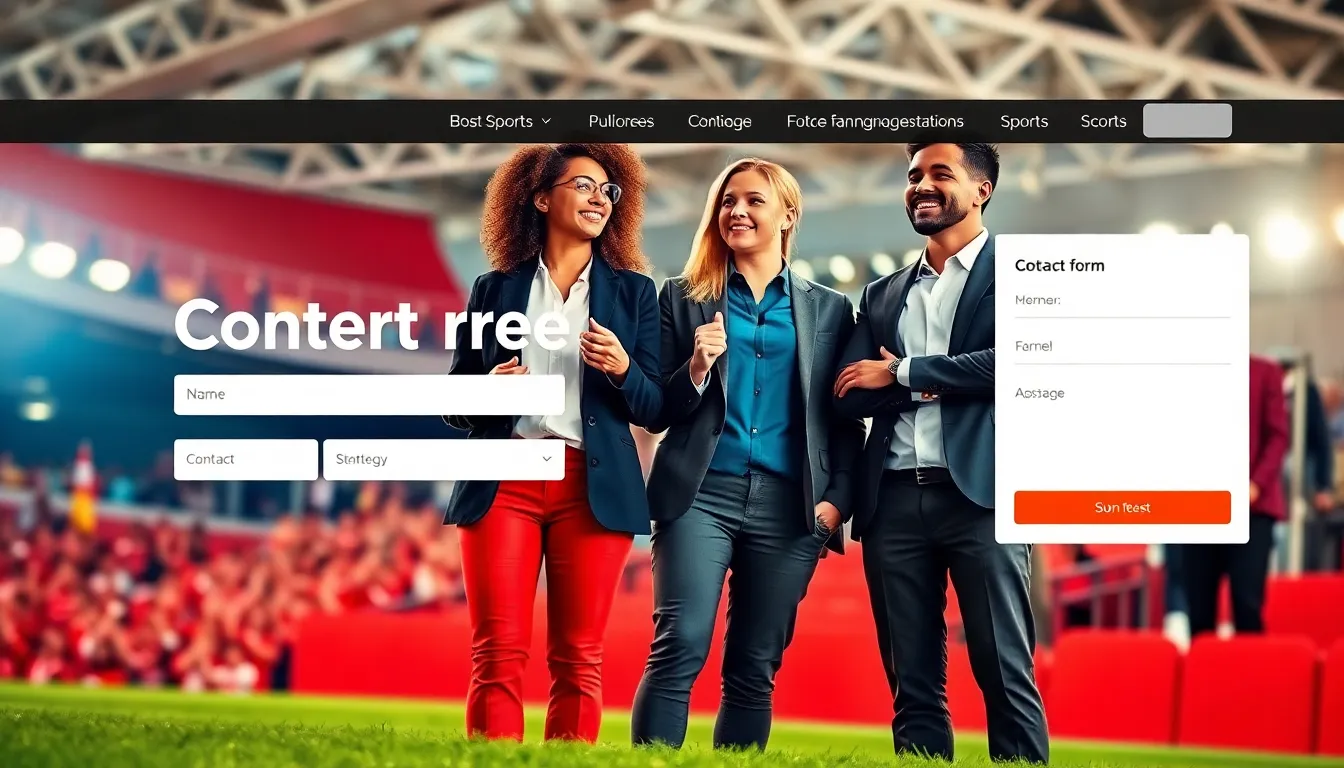Table of Contents
ToggleIn today’s fast-paced world of sports, keeping fans engaged isn’t just a goal, it’s a necessity. And what better way to connect with sports enthusiasts than through a well-crafted contact form? Sure, it might seem like just a simple box on your website, but let me tell you, it’s your golden ticket to fostering connections and building a loyal fanbase. So, ready to turn those clicks into conversations? Let’s immerse.
Importance Of A Contact Form

A contact form might seem like a minor detail in the grand scheme of a sports website, but it plays a crucial role. Think of it as the friendly usher at a stadium, guiding fans to their seats. Without this guiding presence, visitors might wander aimlessly, leaving without ever expressing their thoughts, questions, or enthusiasm.
Having a dedicated space for fan interactions can significantly enhance your engagement levels. It opens the door to valuable feedback, allowing sports organizations to adjust strategies, improve experiences, and even spark new ideas. Also, a well-implemented contact form provides a sense of trust. Fans appreciate knowing they can reach out directly, voice their opinions, or ask questions. In a way, it’s like having a direct line to their favorite team, making them feel valued and heard.
Elements Of An Effective Contact Form
Designing an effective contact form isn’t rocket science, but it does require some thought. Here are the essential elements every successful contact form should include:
- User-Friendly Layout: Ease of navigation is key. The simpler the form, the better. Use clear labels that are easy to understand.
- Minimal Fields: Aim for just the essentials. Too many fields can deter users. Name, email, and message should suffice for most inquiries.
- Clear Call-to-Action (CTA): Whether it’s a button that says ‘Send’ or ‘Let’s Talk.’ make sure it stands out and encourages users to hit that button.
- Responsive Design: Ensure it looks great on all devices. Many users access websites on mobile, so a responsive design is non-negotiable.
- Confirmation Messages: After users submit their inquiries, a friendly confirmation message reassures them that their message was received. This immediate feedback can keep them engaged.
Best Practices For Designing A Contact Form
Once you know the essential elements, it’s time to think about best practices. Here are a few tried-and-true strategies:
- Use Placeholder Text: It can guide users on what to enter in each field. For instance, instead of just labeling a field as ‘Email’, use placeholder text like ‘Your Email Address Here’.
- Real-Time Validation: Implementing real-time feedback helps users correct mistakes on the spot. If they miss a required field or type an invalid email, let them know immediately.
- Incorporate Captcha: While it might seem annoying, a simple verification step can help filter out spam messages and ensure your contact form is used for genuine inquiries. Just a quick tick will do.
- Privacy Assurance: Let users know their information is safe. Including a brief note about your privacy policy can ease concerns about data sharing.
Common Issues With Contact Forms
Although contact forms are vital, they can come with their own set of challenges. Here are some common pitfalls:
- Spam Messages: Without proper measures, spam can flood your inbox, taking precious time away from legitimate inquiries.
- Technical Glitches: Sometimes, forms don’t work properly due to backend errors. This can discourage users from reaching out altogether.
- Ambiguous Feedback: If users don’t receive immediate confirmation of their message being sent, they might wonder if it actually made it through. This uncertainty can lead to frustration.
- Unnecessary Complexity: Forms overloaded with questions can result in drop-offs. Remember: users want to reach out quickly, not complete a mini-survey.
How To Optimize Contact Forms For Better Engagement
To truly make the most of a contact form, optimization is key. Here’s how to boost engagement and responsiveness:
- A/B Testing: Experiment with different designs, field arrangements, and CTAs to see what resonates most with your audience. What works for one group might not work for another.
- Integrate Social Media: Offering a way for fans to connect through social media can be a great help. Adding links to platforms like Twitter and Instagram, alongside your contact form, can increase reach significantly.
- Regularly Update Content: Outdated contact forms can give the impression that a site is neglected. Regularly review the information and ensure everything is up-to-date.
- Follow Up.: Don’t just let inquiries sit, follow up. A quick response can turn an interested individual into a loyal fan. Give them a reason to keep the conversation going.





